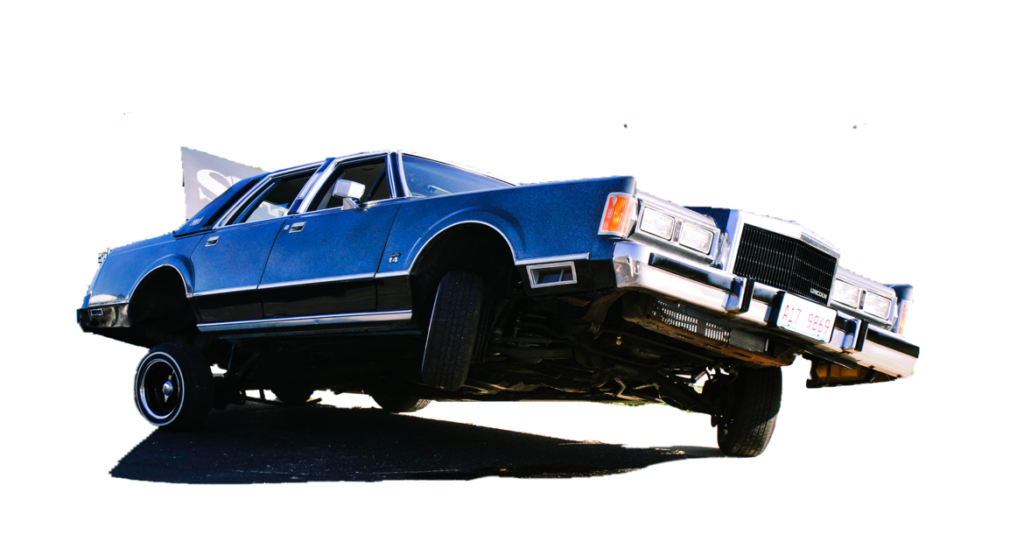Vehicles that bounce have probably been seen in movies or at car shows. A car that lifts and lowers quickly or drives in different directions is fascinating to watch. Hydraulics in automobiles refers to the process of adjusting a car via a series of adjustments. Any vehicle workshop will not be able to perform this procedure. It is a costly procedure that must be performed by a professional. The car with hydraulics is called Lowrider. In order to construct lowriders, a lot of cylinders are used, each costing at least $600 USD. In addition to riding front, rear, and side to side, this pricey and extensive lowrider customization can be ridden on three wheels as well. Also, Read: Expected Technology Trends in 2022
Hydraulic Cars in India
Classic large automobiles from the 1950s can be turned into lowriders with some interior and external alterations. Lowrider cars will sit lower to the ground and can be elevated with the press of a button. Such customized lowriders are not capable of exceeding 15 Kilometers per hour. Because exceeding a specific speed limit will make it impossible to control the vehicle and will result in maximum damage. The control panel on the front of the lowrider will have at least three to twenty-four switches. Each switch is dedicated to a distinct set of activities. In exhibitions, any expert Lowrider operator may safely perform various manoeuvres with such cars. The following are some of the numerous movements that this car is capable of:
- The four corners can be raised or lowered.
- Front or back lifting or lowering
- Sides can be raised or lowered.
- Raising or lowering the entire vehicle
- Riding on three wheels, among other things
All of these motions are made possible by the upgraded hydraulic suspension system in that vehicle. The performance of these lowriders is determined by the type and number of hydraulic pumps. It is a modified hydraulic suspension system that uses the power of hydraulic fluids to lift and lower the vehicle. All of these motions are made possible by the upgraded hydraulic suspension system in that vehicle. The performance of these lowriders is determined by the type and number of hydraulic pumps. It is a modified hydraulic suspension system that uses the power of hydraulic fluids to lift and lower the vehicle. The fluid is poured into the hydraulic lines and reservoir at the trunk when the lowrider is in its flat or original position. Hydraulics start working when a signal is delivered from the control panel. Pumps, batteries, cylinders, and hydraulic fluid are the components that make automotive hydraulics operate. As the number of pumps, batteries, and cylinders rises, so does the performance and hopping speed, as does the cost of customizing. The many batteries mounted on a rack in the trunk of the vehicle will power the pumps in this case. The voltage produced by the batteries will significantly improve the speed of car lifts. The fluid will be pressurized and pumped from the reservoir to the cylinders by the electrically powered pumps. This pressurized fluid at the cylinder extracts or retracts the cylinder piston, lifting or lowering the corresponding portion. Spring shock absorbers are used to reduce problems caused by bouncing. If the lowrider design employs a single pump, it can be utilized to elevate and lower the automobile at the same time. Hoping is possible if 3 pumps are used, and each wheel may be elevated/lowered separately if 4 pumps are used. Lowriders were popular in most countries. Drawbacks of lowriders include the expense, extensive customisation, maintenance, high oil consumption, the danger of accidents, speed limitations and more. Furthermore, overly customised Lowriders are prohibited in some nations.
What is a Hydraulic Car Lift?
In general, hydraulic car lifts consist of an oil tank, a piston enclosed in a cylinder, and a motor-driven pump. Despite their independence from the lift framework, the motor, pump, and fluid container are always connected. Those components need to be kept in a tiny dedicated location nearby. It might be possible to integrate the engine, pump, and fluid container directly into the lift to simplify the design and make it easier to implement. One or both of the vertical arms that hold the platform in place may have pistons and cylinders on one or both sides. Hydraulic systems do not rely solely on the movement of pieces. They also employ fluid pressure. This is why they must have some form of fluid contained within them and act in combination with their other sections. This is the operation of a hydraulic car lift. The pump component forces the fluid from its storage container into the connecting cylinder with the piston. As the fluid pressure rises, it pushes against the piston, causing it to rise. This provides enough force to lift heavy loads attached to the piston and hold them firmly in place until the fluid is removed by the pump’s activities.
Because the cylinders and pistons are attached to either or both sides of the platform of a car lift, they are responsible for its regulated rising and lowering. Because of their dependability, hydraulic components are commonly employed in automobile parking lifts.



